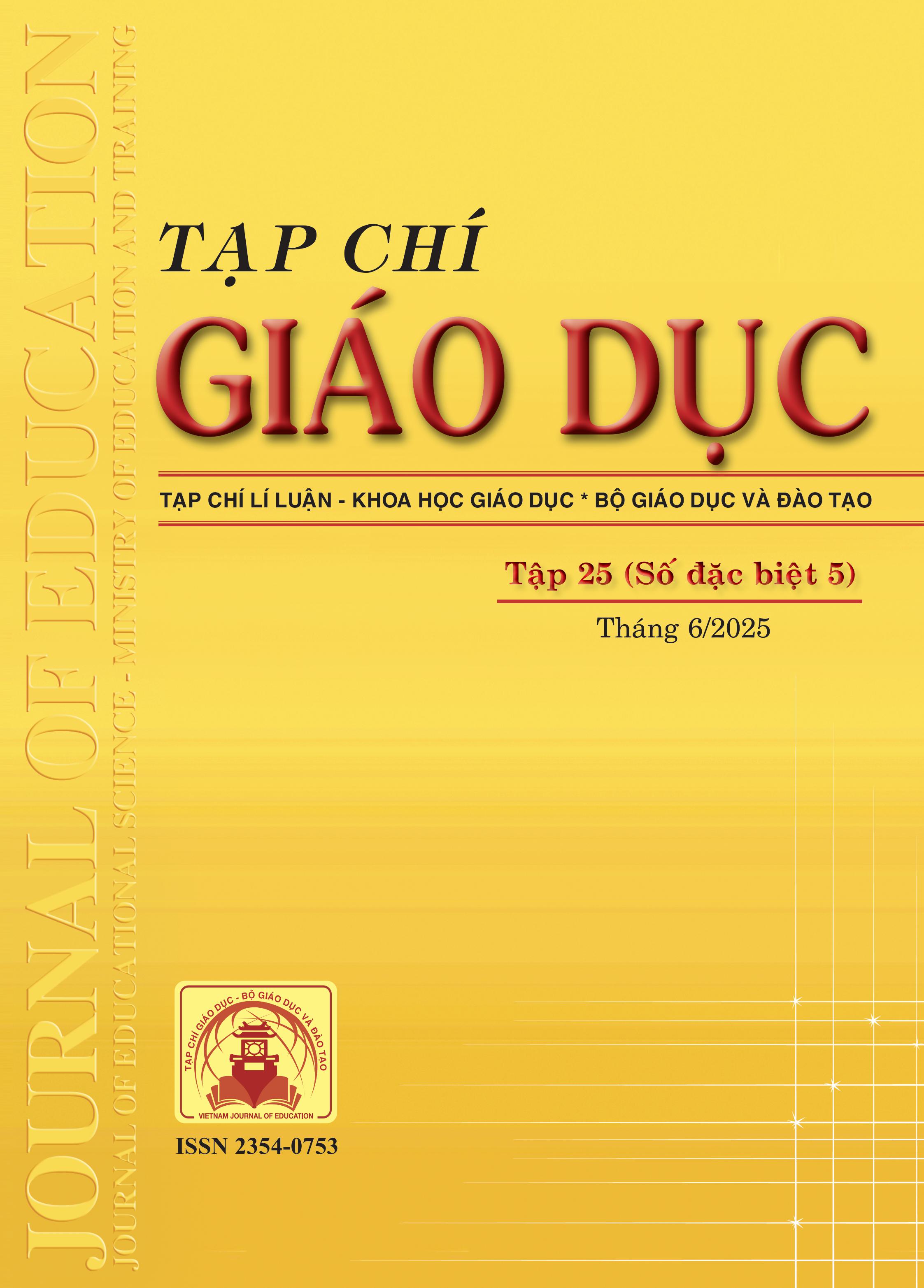Các yếu tố ảnh hưởng đến giáo dục kĩ năng quan sát cho trẻ mẫu giáo: Một nghiên cứu tổng quan
Tóm tắt
Observation skills are a fundamental cognitive competence that plays a crucial role in the development of thinking and learning among preschool children. However, these skills do not emerge naturally but are shaped by various factors within the educational environment. This study employs a literature review methodology to systematize and analyze three primary groups of factors influencing the development of observation skills in preschoolers: (1) child-related factors, including curiosity, attention span, and cognitive competence; (2) teacher-related factors, such as pedagogical competence and the organization of observational activities; and (3) environmental factors, encompassing physical facilities, classroom space, and learning materials. These factors do not operate independently but interact dynamically, forming a comprehensive educational ecosystem. The findings of this study provide both theoretical and practical foundations for curriculum development, strategic planning, and the proposal of solutions aimed at enhancing the effectiveness of observation skills education, thereby preparing children for the next stage of learning in a well-grounded manner.
Tài liệu tham khảo
Eberbach, C., & Crowley, K. (2009). From everyday to scientific observation: How children learn to observe the biologist’s world. Review of Educational Research, 79(1), 39-68.
Fauzi, F., Wangid, M. N., & Prasetyo, Z. K. (2020, February). Observational Skill: The Use of Picture Storybook with Scientific Approach Based Through Project-Based Learning. In 3rd International Conference on Learning Innovation and Quality Education (ICLIQE 2019) (pp. 701-708). Atlantis Press.
Gronlund G. & James. M. (2005). Focused Obeservations (How to observe children for assessement and curriculum planning). USA: Thomson Delmar Learning.
Harlen, W. (2000). The teaching of science in primary schools (3rd ed.). London: David Fulton.
Jean Piaget (2016). Sự hình thành biểu tượng ở trẻ (người dịch: Nguyễn Xuân Khánh, Hoàng Hưng). NXB Kiến thức.
Johnston, J. (2011). Early Explorations in Science. Maidenhead: Open University Press.
Johnston, J. S. (2009) What Does the Skill of Observation Look Like in Young Children?. International Journal of Science Education, 31(18), 2511-2525. http://doi.org/10.1080/09500690802644637
Klemm, J., & Neuhaus, B. J. (2017). The role of involvement and emotional well-being for preschool children’s scientific observation competency in biology. International Journal of Science Education, 39(7), 863-876. http://doi.org/10.1080/09500693.2017.1310408
Klofutar, Š., Jerman, J., & Torkar, G. (2022). Direct versus vicarious experiences for developing children’s skills of observation in early science education. International Journal of Early Years Education, 30(4), 863-880.
Naylor, S., Keogh, B., & Goldsworthy, A. (2004). Active assessment: Thinking, learning and assessment in science. Sandbach, Cheshire: Millgate House.
Nguyễn Thị Mỹ Hạnh (2021). Sử dụng vật liệu thiên nhiên trong tổ chức hoạt động chắp ghép nhằm phát triển kĩ năng quan sát cho trẻ mẫu giáo 5-6 tuổi. Luận án tiến sĩ Khoa học giáo dục, Trường Đại học Sư phạm Hà Nội.
Tompkins, S. P., & Tunnicliffe, S. D. (2001). Looking for ideas: Observations, interpretations and hypothesis making by 12-year-old pupils undertaking science investigations. International Journal of Science Education, 23(8), 791-813.
Tunnicliffe, S. D., & Litson, S. (2002). Observation or imagination? Primary Science Review, 71, 25-27.
Vygotxki.L.X (1997). Tuyển tập tâm lí học. NXB Đại học Quốc gia Hà Nội.
Weisberg, D. S., Hirsh‐Pasek, K., & Golinkoff, R. M. (2013). Guided play: Where curricular goals meet a playful pedagogy. Mind, Brain, and Education, 7(2), 104-112.
Đã Xuất bản
Cách trích dẫn
Số
Chuyên mục
Giấy phép

Tác phẩm này được cấp phép theo Ghi nhận tác giả của Creative Commons Giấy phép quốc tế 4.0 .












